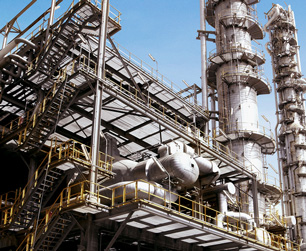Carbon Tetrachloride
| EPA Maximum Contaminant Level (MCL) |
0.005 mg/L |

Carbon tetrachloride is an organic chemical used in the manufacture of chlorofluorocarbon refrigerants (Freon®), cleaning agents, solvents and fire extinguishers. It has also been used in the manufacture of paints, ink, plastics, semiconductors, pesticides and gasoline. Use of carbon tetrachloride has dropped significantly since the 1980s, due to environmental concerns regarding its role in ozone depletion.
Most carbon tetrachloride arrives in the atmosphere, where it degrades very slowly, with a half-life of 18-80 years. It can be released into the environment through industrial wastewater, and has been found in significant amounts in water supplies in the United States.
Health Effects of Carbon Tetrachloride
Exposure to carbon tetrachloride can have effects on the kidney and liver, and neurological effects, including nausea, depression, indigestion and narcosis. Long term exposure can lead to liver problems and an increased risk of cancer, according to the EPA:
Some people who drink water containing carbon tetrachloride in excess of the maximum contaminant level [0.005 milligrams per Liter] over many years could experience problems with their liver and may have an increased risk of getting cancer.
Carbon tetrachloride is classified by the International Agency for Research on Cancer as being “possibly carcinogenic” to humans. It is a known animal carcinogen, but evidence in humans remains inconclusive.
Water Treatment for Carbon Tetrachloride
Carbon tetrachloride can be treated with air stripping (95% removal) or activated carbon filtration. Like most volatile organic chemicals, it is best removed by carbon with a high micropore count. Coconut shell carbon is the carbon of choice with carbon tetrachloride and other VOCs.
Reverse Osmosis removes 70% to 80% of carbon tetrachloride.
Source: Enting Engineering Handbook, WHO, EPA, Wikipedia, Photo: WikiMedia, author: Secl.
Site Index
Filtration Systems
- Aeration for Iron & Sulfide
- Backwashing Filters
(whole house & well units)
- Chlorine & Chemical Injectors
- Countertop Water Filters
- Garden Hose Filters
- Reverse Osmosis, Residential
- Reverse Osmosis, Commercial
- Shower Filters
- Specialty Filters
- Ultraviolet Systems
- Undersink Filters
- Water Softeners
- Whole House Filters
Cartridges
Parts
- Replacement Parts
- Faucets
- Filter Media
- Fittings
- Housings
- O-rings
- Pumps
- Pura UV
- R.O. Parts
- R.O. Tanks
- R.O. Booster Pump
- VIQUA UV